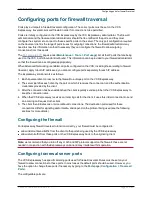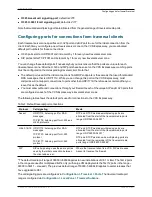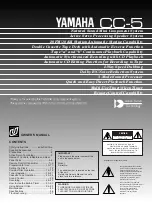
About firewall traversal
The purpose of a firewall is to control the IP traffic entering your network. Firewalls will generally block
unsolicited incoming requests, meaning that any calls originating from outside your network will be
prevented. However, firewalls can be configured to allow outgoing requests to certain trusted destinations,
and to allow responses from those destinations. This principle is used by Cisco's Expressway technology to
enable secure traversal of any firewall.
The Expressway solution
The Expressway solution consists of:
n
A VCS Expressway located outside the firewall on the public network or in the DMZ, which acts as the
firewall traversal server.
n
A VCS Control or other traversal-enabled endpoint located in a private network, which acts as the firewall
traversal client.
The two systems work together to create an environment where all connections between the two are
outbound, i.e. established from the client to the server, and thus able to successfully traverse the firewall.
We recommend that both the VCS Expressway and the VCS Control run the same software version.
How does it work?
The traversal client constantly maintains a connection via the firewall to a designated port on the traversal
server. This connection is kept alive by the client sending packets at regular intervals to the server. When the
traversal server receives an incoming call for the traversal client, it uses this existing connection to send an
incoming call request to the client. The client then initiates the necessary outbound connections required for
the call media and/or signaling.
This process ensures that from the firewall’s point of view, all connections are initiated from the traversal
client inside the firewall out to the traversal server.
For firewall traversal to function correctly, the VCS Expressway must have one traversal server zone
configured on it for each client system that is connecting to it (this does not include traversal-enabled
endpoints which register directly with the VCS Expressway; the settings for these connections are
configured in a different way). Likewise, each VCS client must have one traversal client zone configured on it
for each server that it is connecting to.
The ports and protocols configured for each pair of client-server zones must be the same. See the
Configuring a traversal client and server [p.57]
for a summary of the required configuration on each system.
Because the VCS Expressway listens for connections from the client on a specific port, you are
recommended to create the traversal server zone on the VCS Expressway before you create the traversal
client zone on the VCS Control.
Note that the traversal client and the traversal server must both be VCS systems (neither can be a Cisco
Expressway).
Cisco VCS Administrator Guide (X8.1.1)
Page 53 of 507
Firewall traversal
About firewall traversal
















































